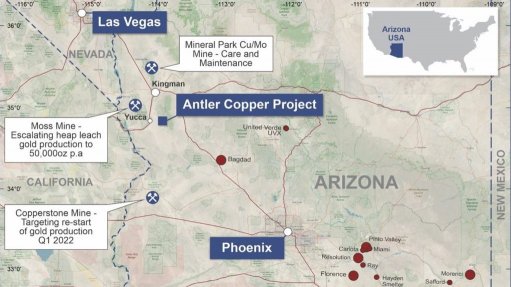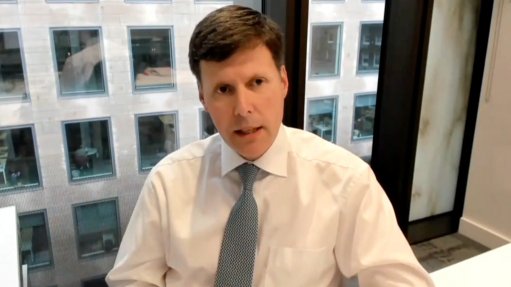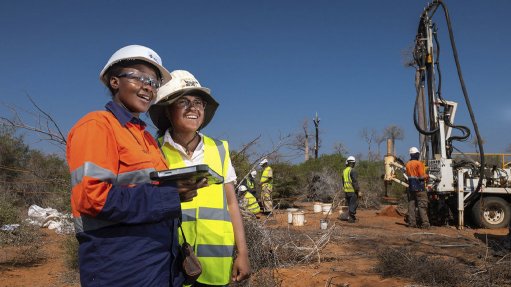WPIC encourages use of platinum-using PEMs for overcoming energy storage problems
The World Platinum Investment Council (WPIC) reports that, as renewable energy solutions are increasingly rolled out around the globe, technologies that can smooth their power deliverance are also increasingly needed to ensure power generated by renewables can be used efficiently.
The WPIC explains that renewable energy, such as wind, solar photovoltaic and hydropower, is the fastest-growing energy source globally and is central to global net-zero initiatives.
It further points out that, according to International Energy Agency estimates, for the objectives of the Paris Agreement to be met, 90% of electricity will need to be generated from renewable sources by 2050.
However, although integrating a higher share of renewable technologies into power systems is essential for decarbonisation, the WPIC says the inherently variable nature of this type of energy poses challenges when delivering a reliable power network that can consistently meet growing demand.
As a result, the need to resolve the grid stability and power storage issues associated with renewables is becoming increasingly critical.
One such solution posited by the WPIC is the use of proton exchange membrane (PEM) electrolysis, which is able to convert variable renewable energy sources to emissions-free green hydrogen.
This so-called power-to-hydrogen solution holds the key to achieving sustainable and dependable power sector transformation, states the WPIC.
PEM systems work by producing hydrogen through electrolysis and have the ability to use any excess energy from renewables and convert them into fuels that can be stored for days, weeks or even months at a time, to be used as and when needed.
This is where platinum and its group of metals come into play, as highly-dynamic PEM technology uses a platinum-based catalyst.
According to Siemens Energy, PEM electrolysis is ideally suited to harvesting variable energy generated from wind and solar power as it achieves high efficiency at a high power density; high product gas quality, even at partial load; and low maintenance and reliable operation. It is also free of hazardous substances.
As such, the WPIC says PEM electrolysers can effectively support the integration of renewables into the electricity system, ensuring excess renewable energy can be stored for later use to provide the necessary grid balancing, offering a flexible load that provides additional power at peak times.
Conversely, at times of lower demand, the WPIC says excess renewable energy can be stored as hydrogen and then converted back to electricity when required.
The concept of power-to-hydrogen also has the potential to provide renewable energy across regions and to areas where it would have previously not been available owing to a lack of proximity to a renewable energy site.
In Canada, US-based power company Cummins operates North America’s first multi-megawatt power-to-hydrogen facility in a collaboration with energy delivery company Enbridge.
The renewable hydrogen storage facility features Cummins’ so-called “next-generation” PEM electrolyser technology and is dispatched to help manage real-time supply and demand imbalances for Ontario’s electricity grid, ensuring its reliable operation.
Every two seconds, the plant adjusts to the signal setpoint with a new load level within its operating range, and it is never limited by a fixed state of charge. Therefore, it can run at any setpoint, indefinitely.
Meanwhile, the WPIC states that the ability to store excess energy through the production of green hydrogen also creates a way for utilities to engage in new market opportunities outside their main power supply activities. For example, excess hydrogen can be sold to industry or used in refuelling networks for fuel cell electric vehicles.
Comments
Press Office
Announcements
What's On
Subscribe to improve your user experience...
Option 1 (equivalent of R125 a month):
Receive a weekly copy of Creamer Media's Engineering News & Mining Weekly magazine
(print copy for those in South Africa and e-magazine for those outside of South Africa)
Receive daily email newsletters
Access to full search results
Access archive of magazine back copies
Access to Projects in Progress
Access to ONE Research Report of your choice in PDF format
Option 2 (equivalent of R375 a month):
All benefits from Option 1
PLUS
Access to Creamer Media's Research Channel Africa for ALL Research Reports, in PDF format, on various industrial and mining sectors
including Electricity; Water; Energy Transition; Hydrogen; Roads, Rail and Ports; Coal; Gold; Platinum; Battery Metals; etc.
Already a subscriber?
Forgotten your password?
Receive weekly copy of Creamer Media's Engineering News & Mining Weekly magazine (print copy for those in South Africa and e-magazine for those outside of South Africa)
➕
Recieve daily email newsletters
➕
Access to full search results
➕
Access archive of magazine back copies
➕
Access to Projects in Progress
➕
Access to ONE Research Report of your choice in PDF format
RESEARCH CHANNEL AFRICA
R4500 (equivalent of R375 a month)
SUBSCRIBEAll benefits from Option 1
➕
Access to Creamer Media's Research Channel Africa for ALL Research Reports on various industrial and mining sectors, in PDF format, including on:
Electricity
➕
Water
➕
Energy Transition
➕
Hydrogen
➕
Roads, Rail and Ports
➕
Coal
➕
Gold
➕
Platinum
➕
Battery Metals
➕
etc.
Receive all benefits from Option 1 or Option 2 delivered to numerous people at your company
➕
Multiple User names and Passwords for simultaneous log-ins
➕
Intranet integration access to all in your organisation

















